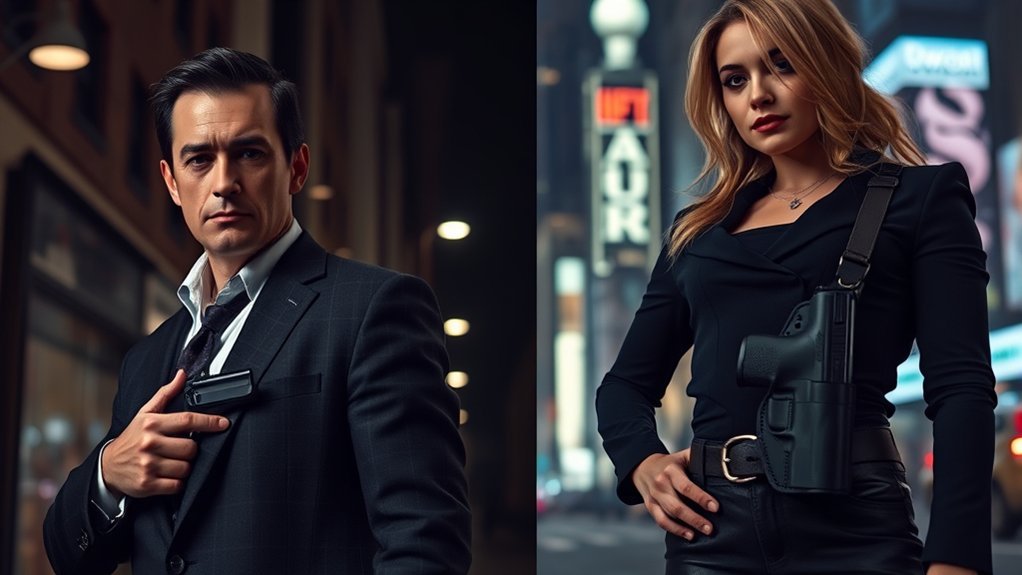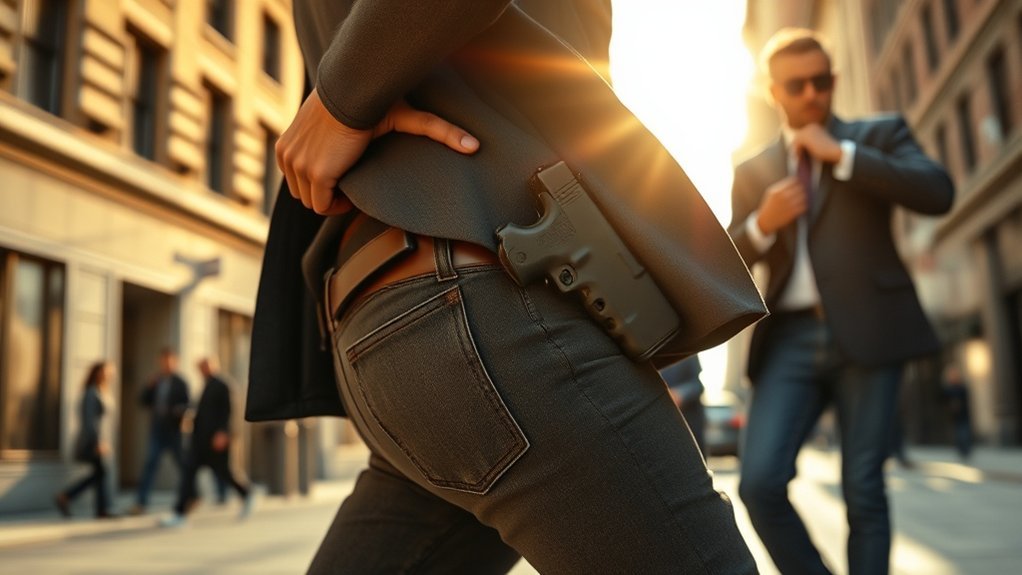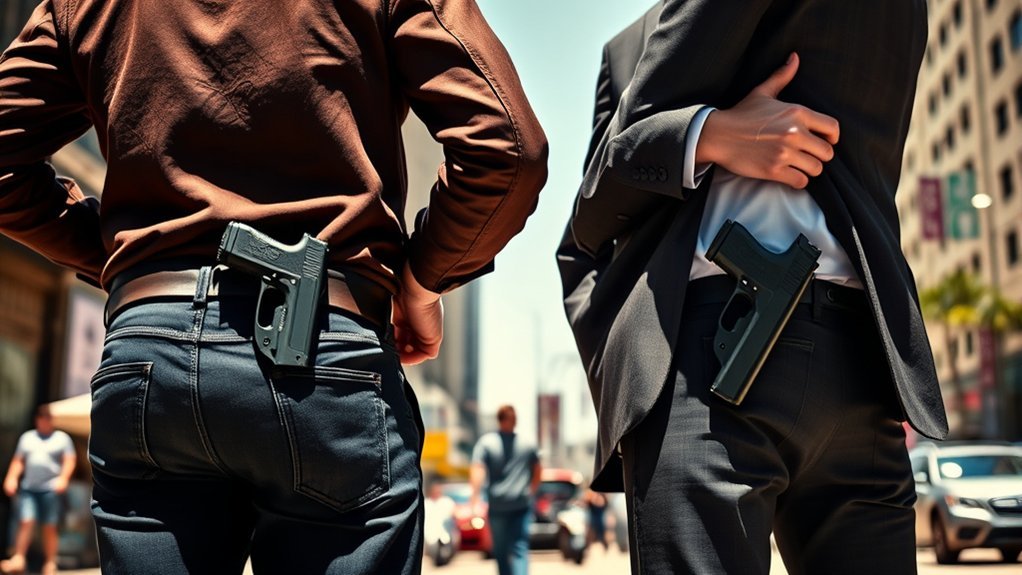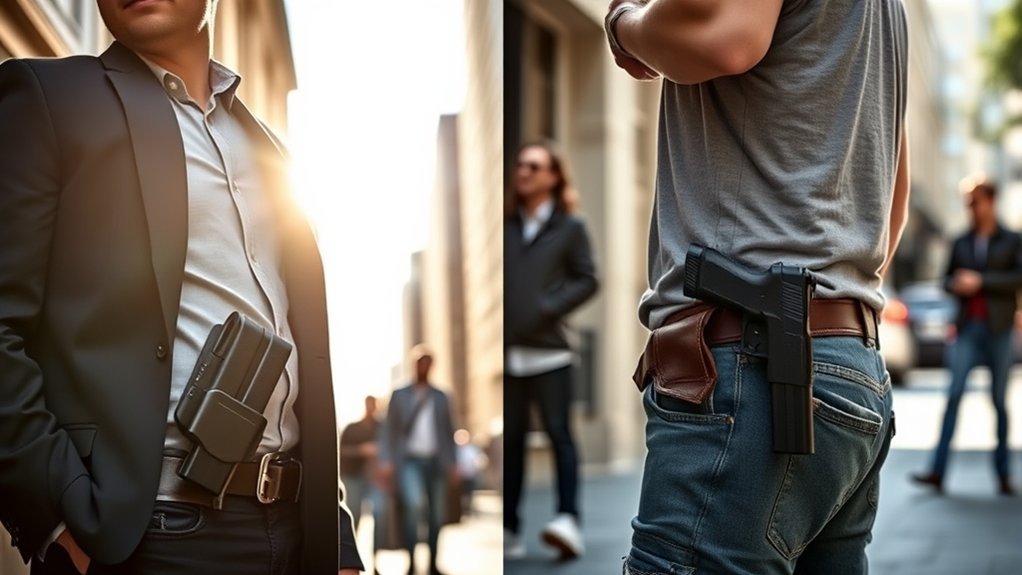When it comes to carrying a firearm, you face an essential choice: concealed carry or open carry. Each method represents a different philosophy about personal safety and freedom. Concealed carry keeps your firearm hidden, prioritizing discretion, while open carry makes a bold statement about your right to self-defense. But which method truly aligns with your values and lifestyle? The answers might surprise you as we explore the nuances of each approach.
What Is Concealed Carry?

When it comes to personal safety, understanding concealed carry is essential for anyone considering exercising their right to bear arms. Concealed carry allows you to keep your firearm hidden from plain sight, providing you with a tactical advantage while ensuring you’re compliant with legal regulations. It empowers you to protect yourself and your loved ones without drawing unnecessary attention. By choosing to carry concealed, you demonstrate responsibility and commitment to safety. You need to be trained, educated, and aware of your surroundings, which ultimately enhances your confidence. Don’t underestimate the value of concealed carry; it’s not just about self-defense, it’s about taking control of your personal security and exercising your rights effectively and responsibly. Be informed, be prepared, and make your choice count.
What Is Open Carry?

Open carry represents a bold approach to exercising your right to bear arms, allowing you to carry your firearm in a visible manner. This method not only showcases your commitment to personal freedom but also serves as a statement of self-defense.
| Visibility | Confidence | Responsibility |
|---|---|---|
| Firearm is seen | Promotes awareness | Encourages safe use |
| Deters threats | Instills confidence | Requires training |
| Legal in many areas | Empowers citizens | Affects public perception |
| Signals readiness | Fosters dialogue | Influences policy |
| Affirms rights | Builds community | Engages advocacy |
Embrace the power of open carry, and stand firm in your belief that the right to bear arms is essential for personal safety and freedom.
Key Differences Between Concealed and Open Carry

Concealed carry and open carry represent two distinct philosophies in exercising your Second Amendment rights, each with its own set of advantages and challenges. When you opt for concealed carry, you’re prioritizing privacy and discretion, keeping your firearm hidden from plain sight. This can create a sense of security and reduce the likelihood of confrontation. In contrast, open carry allows you to display your firearm openly, which can serve as a powerful deterrent against potential threats and can foster a visible culture of responsible gun ownership. However, open carry might also attract unwanted attention. Ultimately, your choice hinges on personal comfort, philosophy, and environment. Understanding these differences empowers you to make an informed decision that aligns with your values and lifestyle.
Legal Considerations for Each Carry Method
Understanding the legal landscape surrounding concealed and open carry is essential for any responsible gun owner. You must know the laws in your state, as they can vary widely. Here are four critical legal considerations:
- Permits: Concealed carry often requires a permit, while open carry may not.
- Public Perception: Open carry can draw attention, potentially leading to confrontations with law enforcement.
- Restrictions: Certain locations, like schools or government buildings, may prohibit both methods.
- Use of Force: Laws governing self-defense can differ greatly between concealed and open carry scenarios.
Stay informed and proactive about these legal factors. Your safety and the safety of others depend on your understanding of these critical issues. Make educated choices and carry responsibly!
Benefits and Drawbacks of Concealed and Open Carry
When deciding between concealed and open carry, it is crucial to weigh both the benefits and drawbacks of each method. Concealed carry offers privacy and can prevent unwanted attention, allowing you to blend in and maintain a low profile. It’s often more socially acceptable, reducing the anxiety of those around you. However, it may hinder quick access in critical situations.
On the other hand, open carry can serve as a deterrent to potential threats, signaling preparedness. Yet, it can provoke fear or hostility in others, leading to unwanted confrontations. You must consider your environment and personal comfort level. Choose wisely—your safety and the safety of those around you depend on it. It’s your responsibility to make an informed decision.
Conclusion
In the debate between concealed carry and open carry, the choice is yours, but know this: nearly 60% of Americans believe that open carry creates a sense of fear rather than safety. Imagine walking through your neighborhood, where someone openly brandishes a firearm—does that empower you or make you uneasy? Your decision impacts not just your safety, but also the community around you. Choose wisely, and consider how your method reflects your values and the world you want to create.

